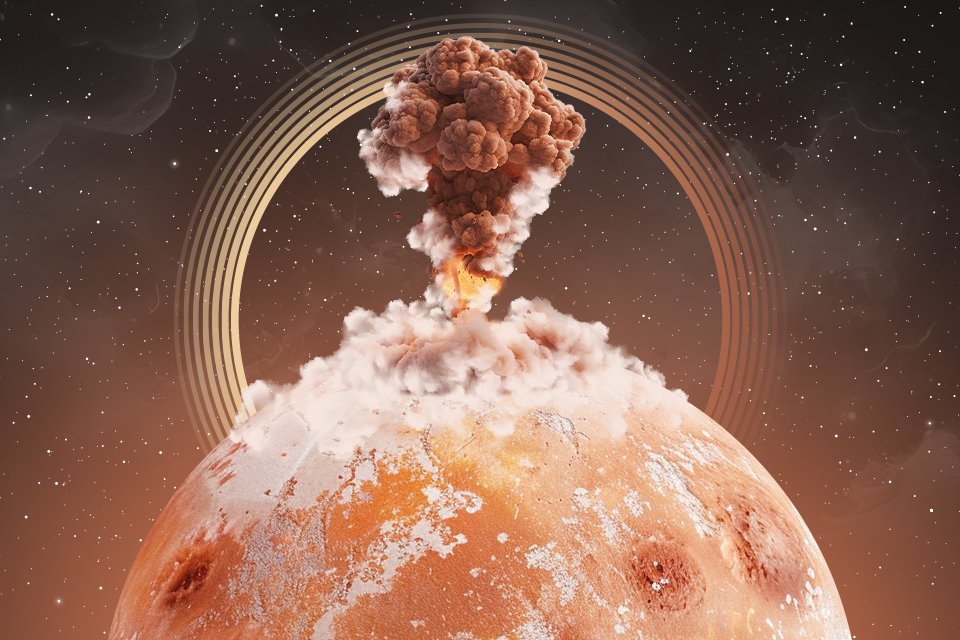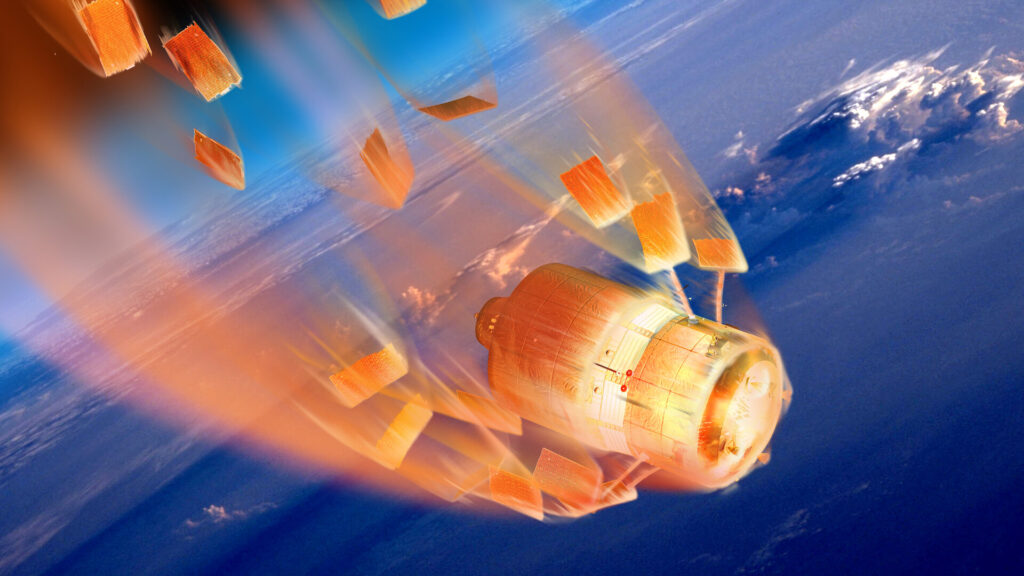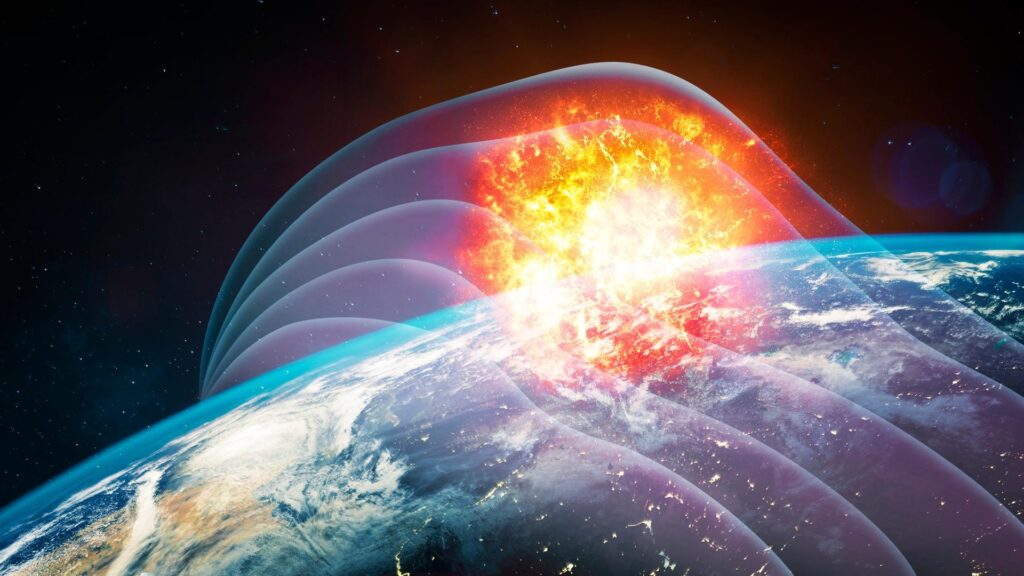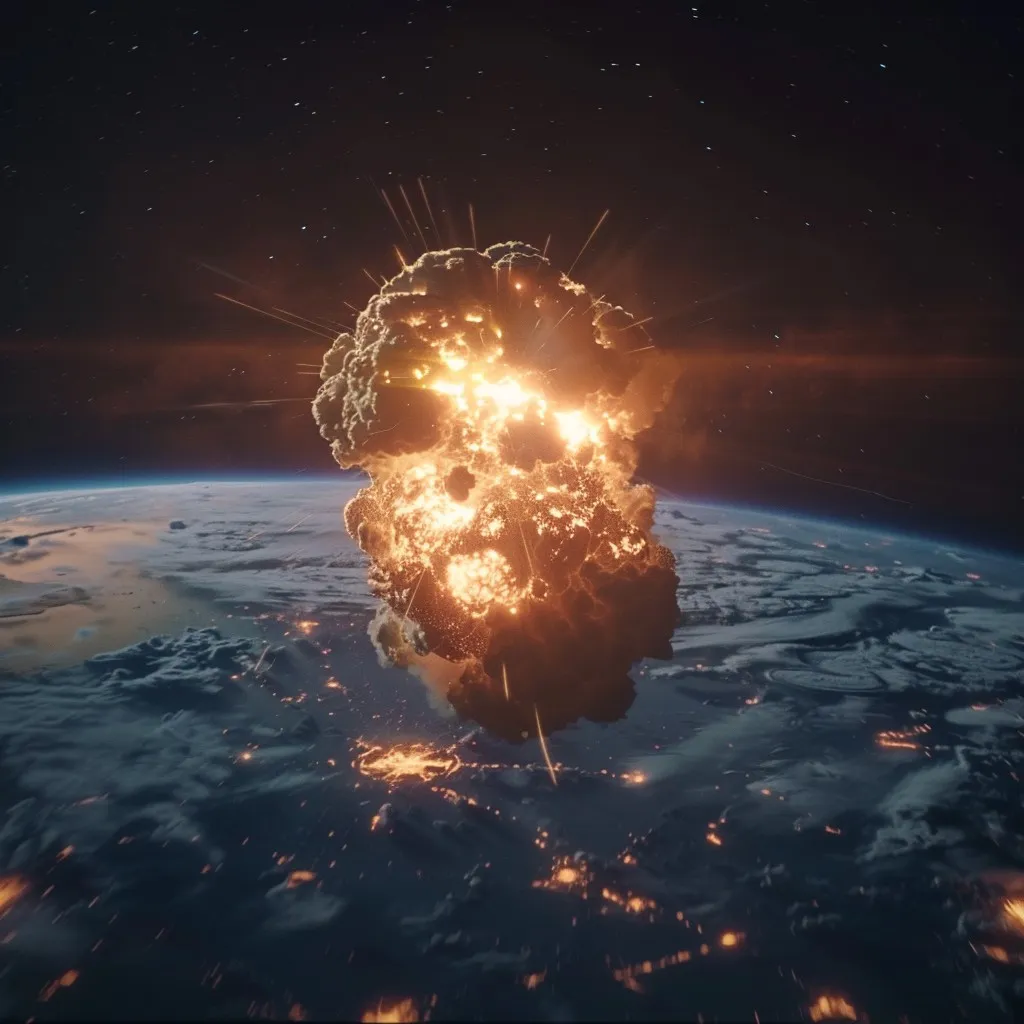Last week, The Wall Street Journal reported that the Cosmos-2553 spacecraft, launched in February 2022, is being used to secretly test components of Russia’s anti-satellite nuclear weapons. And just a week before, Russia vetoed a UN resolution banning the deployment of nuclear weapons in space, effectively confirming such intentions.

We will not discuss the moral and ethical side of this issue. Instead, we will talk about why no country has ever placed nuclear weapons in space, why it is a very risky idea, and why Russia needs all this.
Space with(out) nukes
In the early years of the space age, near-Earth space was not a nuclear-free territory. In the late 1950s and early 1960s, the USSR and the US conducted a series of high-altitude nuclear explosions. At that time, a number of projects to deploy nuclear weapons in orbit and even detonate a nuclear bomb on the Moon were also discussed in earnest, formally for scientific purposes only.
However, in 1963, the superpowers signed the Treaty Banning Nuclear Weapon Tests in the Atmosphere, in Outer Space and Under Water. Four years later, the Outer Space Treaty was adopted. It banned the deployment of nuclear weapons in outer space, on the Moon and other celestial bodies.
It should be said at the outset that the ban on the deployment of nuclear weapons in space was not due to any peacefulness of the military or their moral anguish over the fact that the arms race would now spread to the entire solar system. The reasons were purely practical.
To begin with, in those years, the idea of deploying nuclear weapons in space was of interest to the military mainly in terms of its use as a first-strike capability. After all, a warhead dropped from orbit would theoretically take only a few minutes to pass through the atmosphere and hit the target. This was faster than using intercontinental ballistic missiles (ICBMs).

However, on closer inspection, there were a number of “buts” that quickly buried the idea. Firstly, unlike ICBMs hidden in silos and submarines, satellites are always in plain sight, making them more vulnerable while much more expensive.
Secondly, an ICBM can be aimed at any point at any time, while an orbital bomb can only hit a target that is currently on its flight path. If it abruptly changes its orbit, such manoeuvres will inevitably be noticed by the enemy, which will negate the effect of surprise. Moreover, any change in the orbit of a nuclear-capable satellite could in principle be interpreted as preparation for an attack and provoke a preemptive strike — even if the other side had no intention of attacking.
Thirdly, the launch vehicles used for space launches sometimes fall down. And in the case of a rocket carrying a satellite with a nuclear bomb, it is not yet clear what is worse: if it crashes into one’s own territory or if it crashes into the territory of a potential enemy.

Fourth, spacecraft have a limited lifespan. What should be done with a satellite carrying a bomb that has exhausted its life? In theory, it can be transferred to a higher orbit. But, again, this is only a delay in solving the problem. And what if the satellite fails prematurely, cannot enter the burial orbit (and such situations are not uncommon) and falls down in a few years to unpredictable place?
All these factors brought the initial enthusiasm of the military to naught. And that is why the USSR and the US never deployed nuclear weapons in space. This option simply did not have any obvious advantages over the use of ICBMs. Instead, it had many risk factors that could lead to the accidental outbreak of World War III.
Russian roulette on orbit
After the above, many people probably have several obvious questions. Why does Russia need to deploy nuclear weapons in space now? Has something radically changed over the past sixty years and now it has suddenly become safe (if such a concept can be applied to nuclear weapons in principle)?
Let’s start with the answer to the second question. No, the deployment of nuclear weapons in space still carries a huge number of risks and could lead to an accidental outbreak of war. Even if we take into account the increased reliability of rockets (although they still fall), the main question remains: what to do with a bomb in space after the satellite has exhausted its life? It’s no secret that, given the deplorable state of Russian electronics, its spacecraft have a much shorter lifespan than Western ones and are much more likely to fail prematurely.
In theory, this problem could be solved by using a spacecraft with a shuttle-like cargo bay that could deorbitalise the bomb and return it to Earth. But Russia does not have anything like that, and it is not likely to get such craft in the coming decades. So any satellite it launches with an atomic bomb will eventually fall out of orbit and crash to Earth. It is hardly necessary to explain the consequences of such Russian roulette in space.
Why does Russia need nuclear weapons in space?
Now let’s answer the main question. Why did Russia need a nuclear bomb in space in the first place?
Tests carried out in the 1950s and 1960s showed that a space nuclear explosion leads to the formation of an artificial radiation belt around the Earth, which is very harmful to electronics. According to some estimates, it could destroy up to 90% of all existing vehicles in low orbits and make any manned spaceflight impossible for at least a year.

Such a weapon can be used for only one purpose — to destroy mega-satellite constellations, primarily the Starlink system. It already has more than six thousand active satellites, making it virtually impossible to destroy by conventional means. The irony is that Russia could use nuclear weapons in space because of its technological backwardness. It does not have many satellites, so they can be sacrificed. But for Western countries, the loss of most of their satellites would have very, very serious consequences both militarily and economically.
However, there is one “small” nuance. Radiation belts do not care about the nationality of spacecraft. If such a weapon is used, the satellites of absolutely every country on Earth, including its formal allies like China, will be under attack. They would also be destroyed, just like, say, the Chinese Tiangong orbital station. Therefore, a nuclear bomb in space can, in fact, be considered something akin to a weapon for the doomsday — a total war of complete destruction, when the consequences are absolutely unimportant.

The final question is why put a satellite with a bomb into orbit at all. After all, the same result can be achieved by launching a ballistic missile with a nuclear charge and then detonating it at the desired altitude (as was done during nuclear tests in the late 1950s and early 1960s). In this case, Russia would not even violate its formal obligations, such as the Outer Space Treaty.
Most likely, the answer lies in surprise. The launch of a ballistic missile would be detected, giving the West a few minutes to respond. A satellite with a bomb, on the other hand, can be blown up at any second without any visible preparations.
Of course, we cannot rule out the possibility that this entire programme could be part of a large-scale Russian bluff to intimidate the West into stopping helping Ukraine. After all, as we have already noted, the deployment of nuclear weapons in space creates a huge number of risks and problems that are very difficult, if not impossible, to solve. And this is not the first time that Russia has rattled its imaginary weapons in front of the world.
But if Russia really tries to deploy nuclear bombs in space, it will be a direct challenge not only to the West, but to the entire planet, to all states on Earth, because such weapons can throw civilisation back in time for many decades. In this case, we can only hope that they will be able to realise the scale of the threat and develop a joint response before it is too late.

